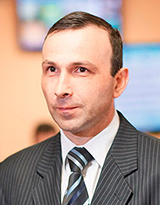Algorithm for the analysis of kinematic characteristics of running
https://doi.org/10.35596/1729-7648-2020-18-8-37-45
Abstract
About the Authors
N. S. DavydovaBelarus
Davydova N.S., PhD, Аssociate Professor, Associate Professor of the Infocommunication Technologies Department
220013, Republic of Belarus Minsk, P. Brovka str., 6
V. Е. Vasiuk
Belarus
Vasiuk V.Е., PhD (Pedagogics), Аssociate Professor, Head of the Sports Engineering Department
Minsk
N. A. Paramonova
Belarus
Paramonova N.А., PhD (Biology), Аssociate Professor, Аssociate Professor of the Sports Engineering Department
Minsk
М. М. Mezhennaya
Belarus
Mezhennaya М.M., PhD, Аssociate Professor, Аssociate Professor of the Engineering Psychology and Ergonomics Department
Minsk
D. I. Guseinov
Belarus
Guseinov D.I., PhD student of the Sports Engineering Department
Minsk
References
1. Popov G.I. [Motion biomechanics]. Moscow: Akademiya; 2011. (In Russ.)
2. McGinnis P.M. Biomechanics of sport and exercise. Human Kinetics; 2013.
3. Watkins J. An introduction to biomechanics of sport and exercise. London: Churchill Livingstone; 2007.
4. Khoshnoud F., de Silva C.W. Recent advances in MEMS sensor technology-mechanical applications. IEEE Instrumentation & Measurement Magazine. 2012;15:14-24.
5. Segers V. et al. Biomechanics of spontaneous overground walk-to-run transition. Journal of Experimental Biology. 2013;16:3047-3054.
6. Mayagoitia R.E., Nene A.V., Veltink P.H. Accelerometer and rate gyroscope measurement of kinematics: an inexpensive alternative to optical motion analysis systems. Journal of biomechanics. 2002;35(4):537-542.
7. Looney M. The Basics of MEMS IMU/Gyroscope Alignment. Analog Dialogue. 2015;49:1-6.
8. Antoniou A. Digital signal processing. New York: McGraw-Hill; 2016.
9. Anshel M.H. Sport psychology: From theory to practice. B. Cummings; 2003.
10. Hu G.S. Introduction to digital signal processing. Beijing: Tsinghua University Press; 2005.
11. Zhilyaev A.A. [Biomechanical diagnostics of optimal performance of cyclic movements]. Theory and practice of physical culture. 2001;10:41-43. (In Russ.)
12. Davydova N.S, Osipov A.N., Kulchitsky V.A., Davydov M.V., Mezhennaya M.M. [Estimation of human movement skill variability based on electrophysiological and biomechanical motion parameters]. Doklady BGUIR = Doklady BGUIR. 2012;1(63):40-46. (In Russ.)
13. Davydova N., Lukashevich D., Bykov D., Vasiuk V., Osipov A., Semeniuk A., Mezhennaya M., Davydov M. Аmplitude-time analysis of biomechanical patterns of human motions. Journal Engineering Science. 2020;3:169-181.
Review
For citations:
Davydova N.S., Vasiuk V.Е., Paramonova N.A., Mezhennaya М.М., Guseinov D.I. Algorithm for the analysis of kinematic characteristics of running. Doklady BGUIR. 2020;18(8):37-45. (In Russ.) https://doi.org/10.35596/1729-7648-2020-18-8-37-45































